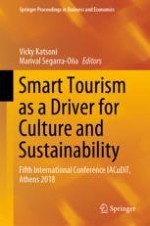This book explores the latest developments in the field of smart tourism, focusing in particular on the important cultural and sustainability synergies that have emerged during the digital era. The aim is to elucidate how ICTs can promote innovation and creativity in the tourism and leisure sector in ways that take into account cultural and social responsibilities, foster sustainable tourism management, and enhance cultural tourism, cultural heritage, and sustainable development. The book is based on the proceedings of the Fifth International Conference of the International Association of Cultural and Digital Tourism (IACuDiT), attended by academics and industry practitioners from cultural, heritage, communication, and innovational tourism backgrounds, and is edited in collaboration with IACuDiT. It will have broad appeal to professionals from academia, industry, government, and other organizations who wish to learn about novel perspectives in the fields of tourism, travel, hospitality, culture and heritage, leisure, and sports within the context of a knowledge society and smart economy in which sustainability is becoming ever more important.
